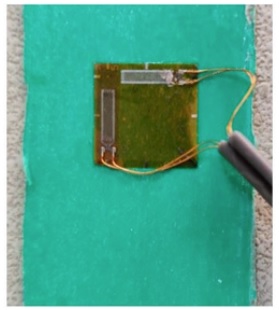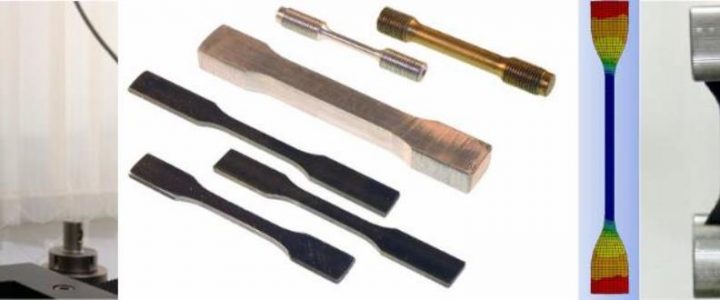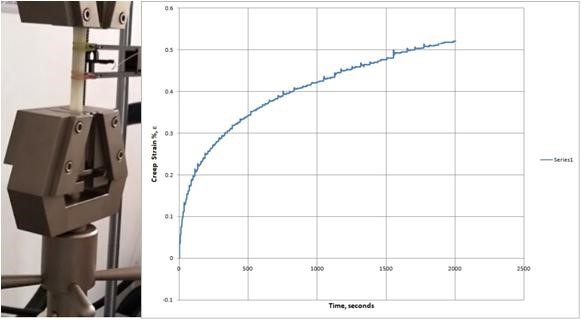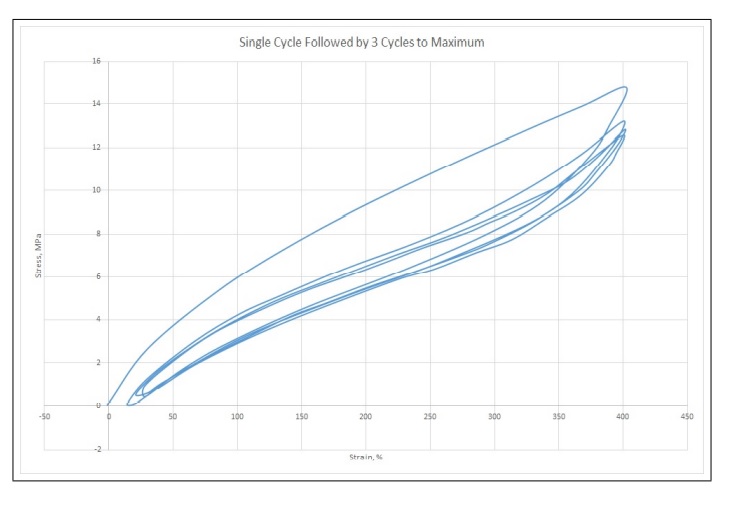
Composite Material Testing for Drones and UAV Applications
Unmanned Aerial Vehicles (UAVs), commonly known as drones, have revolutionized numerous industries, from agriculture and real estate to cinematography and defense. One of the key factors contributing to the versatility and performance of these drones is the use of composite materials in their construction [1,2]. Composite material testing for drones and UAV applications is both difficult and challenging. The use of fiber-reinforced plastic composite materials challenges drone UAV engineers to design and manufacture products with high strength, stiffness and low cost. The demand for more maneuverable, payload effective UAVs is increasing, where composite materials are playing an essential role in the progress of these new high-performance UAV aircrafts with special composite material characteristics like light weight and high strength. These composite materials are distinguished by Young’s modulus as compared to different kinds of metals and aluminum alloys. Multi-rotor type UAVs represent an extremely complex system in terms of design and control. Octacopter, hexacopter and Quadcopter are typical of such multi-rotor designs. Such a type of aircraft is an inherently unstable system, which results from the fact that it cannot independently return to the point of balance (hover) if it loses the functionality of the control loops but will fall or begin to move uncontrollably in space. Furthermore, multirotor UAVs are nonlinear systems since rotor aerodynamic forces and moment characteristics are nonlinear functions with respect to angular velocities and these reasons make the materials used in the manufacturing to be of high quality, load capacity with an infinite fatigue life for the application designed for.
Why Composite Materials?

Composite materials, such as polymers reinforced with carbon fibers (CFRP) and fiberglass (GFRP), are widely used in the manufacturing of drone components, including the fuselage, wings, and landing gear[1].
Polymer composite materials are widely used in various industries, including the manufacturing of drone UAV components, due to their numerous advantages:
High Strength-to-Weight Ratio: Polymer composites, such as those reinforced with carbon or glass fibers, offer a high strength-to-weight ratio[4]. This property is crucial in applications like drone manufacturing, where reducing weight while maintaining strength can enhance performance[4].
Durability: Composites are known for their durability. They do not rust, have high dimensional stability, and can maintain their shape in various conditions. This makes them suitable for outdoor structures and components that are designed to last for a long time.
Design Flexibility: Composites open up new design options that might be hard to achieve with traditional materials. They allow for part consolidation, and their surface texture can be altered to mimic any finish.
Improved Production: With advancements in manufacturing processes, composites are now easier to produce. Digital Composite Manufacturing (DCM), for instance, has made it possible to fabricate composite parts without manual labor.
Material Stability and Insulation: Polymers used in composites offer high material stability against corrosion, good electrical and thermal insulation, and are easy to shape, making them ideal for economic mass production[4].
These advantages make polymer composites an excellent choice for various applications, including the construction of drone components. However, it’s important to note that the use of these materials also necessitates comprehensive testing to ensure safety, reliability, and durability.
Moreover, compared to traditional materials like aluminum, composites can reduce weight by 15-45%, increase corrosion, fatigue, and impact resistance, and reduce noise and vibrations[1].
Testing Composite Materials
Testing composite materials is a critical aspect of ensuring their performance and reliability in various applications, including drone components. Here are some of the common methods used for testing composite materials:
Mechanical Testing: This includes tensile (tension), flexural, impact, shear, and compression testing[1,2]. These tests help determine the material’s strength and deformation under different types of loads.
Physical Testing: This involves tests like water absorption, density, hardness. These tests provide insights into the material’s physical properties and how they might change in different environments.
Thermal Testing: Dynamic Mechanical Analysis (DMA), and Thermomechanical Analysis (TMA) are used to study the material’s thermal properties2.
Moisture Testing: This includes tests like water absorption and moisture conditioning. These tests are crucial for applications where the material might be exposed to moisture.
Analytical Testing: This includes tests like density of core materials, ignition loss, void content, content analysis, and Fourier Transform Infrared Spectroscopy (FTIR). These tests provide a deeper understanding of the material’s composition and structure.
These tests help manufacturers understand the properties of the composite materials that go into a finished product. Composite material testing for drones and UAV applications is both difficult and challenging. The data derived from these tests can be used to compare the composite materials against conventional materials. It’s important to note that the specific tests used can vary depending on the type of composite material and its intended application
Mechanical Testing & Performance Assessment
Uniaxial Tension Test (Directional) (ASTM D638, ISO 527):
The stress (ζ) in a uniaxial tension testis calculated from;
ζ = Load / Area of the material sample ……………………………………..(1)
The strain(ε) is calculated from; ε = δl (change in length) / l (Initial length) ……………..(2)
The slope of the initial linear portion of the curve (E) is the Young’s modulus and given by; E = (ζ2- ζ1) / (ε2- ε1) ……………………………………..(3)


4 Point Bend Flexure Test (ASTM D6272):
The four-point flexural test provides values for the modulus of elasticity in bending, flexural stress, flexural. This test is very similar to the three-point bending flexural test. The major difference being that with the addition of a fourth nose for load application the portion of the beam between the two loading points is put under maximum stress. In the 3 point bend test only the portion of beam under the loading nose is under stress.

This arrangement helps when testing high stiffness materials like ceramics infused polymers, where the number and severity of flaws under maximum stress is directly related to the flexural strength and crack initiation in the material. Compared to the three-point bending flexural test, there are no shear forces in the four-point bending flexural test in the area between the two loading pins.
Poisson’s Ratio Test as per ASTM D3039:
Poisson’s ratio is one of the most important parameter used for structure design where all dimensional changes resulting from application of force need to be taken into account, specially for 3d printed materials. For this test method, Poisson’s ratio is obtained from strains resulting from uniaxial stress only. ASTM D3039 is primarily used to evaluate the Poison’s ratio. Testing is performed by applying a tensile force to a specimen and measuring various properties of the specimen under stress. Two strain gauges are bonded to the specimen at 0 and 90 degrees to measure the lateral and linear strains. The ratio of the lateral and linear strain provides us with the Poisson’s ratio.

Flatwise Compression Test as per ASTM D695:
The compressive properties of 3d printed materials are important when the product performs under compressive loading conditions. The testing is carried out in the direction normal to the plane of facings as the core would be placed in a structural sandwich construction. The test procedures pertain to compression call for test conditions where the deformation is applied under quasi-static conditions negating the mass and inertia effects.

The test procedures pertaining to compression call for test conditions where the deformation is applied under quasi-static conditions negating the mass and inertia effects.
Modified Compression Test as per Boeing BSS 7260:
Modified ASTM D695 and Boeing BSS 7260 is the testing specification that determines compressive strength and stiffness of polymer matrix composite materials using a loading compression test fixture. This test procedure introduces the compressive force into the specimen through end loading.

Axial Fatigue Test as per ASTM D7791 & D3479:
ASTM D7791 describes the determination of dynamic fatigueproperties of plastics in uniaxial loading conditions. Rigid or semi-rigid plastic samples are loaded intension (Procedure A) and rigid plastic samples are loaded incompression (Procedure B) to determine the effect of processing, surface condition, stress, and such,on the fatigue resistance of plastic and reinforced composite materials subjected to uniaxial stress for a large number of cycles.The results are suitable for study of high load carrying capability of candidate materials. ASTM recommends a test frequency of 5hz or lower.The tests can be carried out under load/stress or displacement/strain control. The test method allows generation of stress or strain as a function of cycles, with the fatigue limit characterized by failure of the specimen or reaching 10E+07 cycles.The maximum and minimum stress or strain levels are defined throughan R ratio.

3 Point Bend Flexure Test (ASTM D790):
Three point bending testing is carried out to understand the bending stress, flexural stress and strain of composite and thermoplastic 3d printed materials. The specimen is loaded in a horizontal position, and in such a way that the compressive stress occurs in the upper portion and the tensile stress occurs in the lower portion of the cross section.This is done by having round bars or curved surfaces supporting the specimen from underneath. Round bars or supports with suitable radii are provided so as to have a single point or line of contact with the specimen. The load is applied by the rounded nose on the top surface of the specimen. If the specimen is symmetrical about its cross section the maximum tensile and compressive stresses will be equal. This test fixture and geometry provides loading conditions so that specimen fails in tension or compression.

For most composite materials,the compressive strength islower than the tensile and thespecimen will fail at thecompression surface. This compressive failure isassociated with the localbuckling (micro buckling) ofindividual fibres.
Drop Weight low Velocity Impact Test (ASTM D7136, ISO 6603):
The importance of understanding the response of structural composites to impact events cannot be emphasized enough. Low velocity impact occurs at velocities below 10 m/s and is likely to cause some dents and visible damage on the surface due to matrix cracking and fibre breaking, as well as delamination of the material. In some materials, impact tests characterize the face sheet quality and if they are suitable for the application.

Summary:
A variety of standardized mechanical tests on unreinforced and reinforced 3d printed materials including tension, compression, flexural,and fatigue have been discussed.
Mechanical properties of 3d printed polymers, fiber-reinforced polymeric composites immensely depend on thenature of the polymer filament, fiber, and the layer by layer interfacial bonding. Advanced engineering design and analysis applications like Finite Element Analysis use this mechanical test data to characterize the materials. These material properties can be used to develop material models for use in FEA softwares like Ansys, Abaqus, LS-Dyna, MSC-Marc etc.
Conclusion
The use of composite materials in drone manufacturing presents a promising avenue for enhancing UAV performance. However, it also necessitates comprehensive testing to ensure the safety, reliability, and durability of these drones. As the drone industry continues to grow and evolve, so too will the methods for testing and optimizing the use of composite materials in drone construction.
Keywords: UAV, composite materials, drone components, material testing, CFRP, GFRP, finite element analysis, bending test.
References:
- M Sönmez, Ce Pelin, M Georgescu, G Pelin, Md Stelescu, M Nituica, G Stoian, Unmanned Aerial Vehicles – Classification, Types Of Composite Materials Used In Their Structure And Applications.
- Camil, Lancea et al., Simulation, Fabrication and Testing of UAV Composite Landing Gear. MDPI Journal, https://doi.org/10.3390/app12178598
- National Research Council, Airframe Materials and Structures, Enabling Science for Military Systems
- Anup Ghosh and Mayank Dwivedi, Advantages and Applications of Polymeric Composites, Processability of Polymeric Composites, Springer, 2019.
- Srinivas, Kartik., Mechanical Characterization Testing Of Thermoplastics And Composite Materials, AdvanSES Report, https://www.researchgate.net/publication/339872757_Mechanical_Characterization_Testing_of_Thermoplastics_and_Composite_Materials























